Provence During the Revolution:
Most of Provence, with the exception of Marseille, Aix and Avignon, was rural, conservative and largely royalist. The Revolution was as violent and bloody in Provence as it was in other parts of France. On 30 April 1790, Fort Saint-Nicolas in Marseille was besieged, and many of the soldiers inside were massacred. On 17 October 1791 a massacre of royalists and religious figures took place in the ice storage rooms (glaciere) of the prison of the Palace of the Popes in Avignon.
When the radical Montagnards seized power from the Girondins in May 1793, a real counter-revolution broke out in Avignon, Marseille and Toulon. A revolutionary army under General Carteaux recaptured Marseille in August 1793 and renamed it “City without a Name” (Ville sans Nom.) In Toulon, the opponents of the Revolution handed the city to a British and Spanish fleet on 28 August 1793. A Revolutionary Army laid siege to the British positions for four months (see the Siege of Toulon), and finally, thanks to the enterprise of the young commander of artillery, Napoleon Bonaparte, defeated the British and drove them out in December 1793. About 15,000 royalists escaped with the British fleet, but five to eight hundred of the 7,000 who remained were shot on the Champ de Mars, and Toulon was renamed “Port la Montagne”.
Provence produced the most memorable song of the period, La Marseillaise, which became famous when it was sung on the streets of Paris by the volunteers from Marseille. It became the most popular song of the Revolution, and in 1879 became the national anthem of France.
The fall of the Montagnards in July 1794 was followed by a new White Terror aimed at the revolutionaries. Calm was only restored by the rise of Napoleon to power in 1795.
I found the crown in the gutter and I picked it up.
~Napoleon Bonaparte upon his coronation – age 35
Napoleon restored the belongings and power of the families of the old regime in Provence. The British fleet of Admiral Horatio Nelson blockaded Toulon, and almost all maritime commerce was stopped, causing hardship and poverty. When Napoleon was defeated, his fall was celebrated in Provence. When he escaped from Elba on 1 March 1815, and landed at Golfe-Juan, he detoured to avoid the cities of Provence, which were hostile to him, and therefore directed his small force directly to the northeast of it.
Normandy
This morning, Octobet 5th, we took off for Normandy. It was a 20 minute schlep to the Gare Routier, the bus station, to catch the shuttle to the TGV train station and the 10:20 “bullet train” to Paris. The train was PACKED. There were people sitting on suit cases in the aisles, tucked into luggage racks, stacked in the stairways, and sleeping in the cafeteria car – side by side with two dogs. No one ever checked tickets, they seem to do so only about half the time. I bet 25% of the riders did not have tickets. Maybe the conductor didn’t want to fight through the mob. We had reserved seats so we were OK. Three hours and 500 miles later we arrived at Gare de Lyon in Paris. A quick subway ride brought us to Gare Saint Lazre where we transferred to the regional train for Bayeux on the Normandy Peninsula, two hours further on. After a short walk we arrived at the Hotel Le Bayeux.
The hotel is fine and in a good location but let’s just say that the boat was good training for the spaces involved. We knew from friends that the little restaurant on the corner by the cathedral is good so we tried it out, and it is. Our meals were excellent and the prices very reasonable. I had sea snails for an appetizer the first night.
I was a little apprehensive even though I like clams, mussels, escargot and such. They were excellent. I still don’t know exactly how they were prepared but they were served cold, in the shell, with cold side sauce. I had canard (duck) the second night which was also excellent. Rolynn had boeuf in camambert sauce one night and veal another, both of which she enjoyed very much. Our three course meals and Rolynn’s wine came to less than €40.
Normandy is very rural – dairy country. 70% of France’s dairy products come from here and Brittany. They are known for cheeses, especially the tasty camambert which is served with nearly everything. Calvados, apple brandy, is another regional specialty. The weather here has been changeable. First some sun then clouds and a sharp wind. But, if it’s not raining it’s a good day in Normandy, they say. On our first full day we hit the Bayeux Tapestry exhibit. More on that in a minute. Bayeux was not bombed during the war so the town and it’s magnificent cathedral (1077) have survived intact.
A very pleasant place which has been here for centuries, it now clearly exists for the Normandy beaches tourist trade. But, it is also one of the most significant places in the western world so a little history is in order given that there is so much of it around here.

This, the smaller of two bumps on the NW corner of France, is the site of two of the most important events in the history of the western world. The second, of course, is D-Day, the invasion of Europe by the allied forces on June 6, 1944. More about that later. The other, an older story, is the invasion that embarked from here on September 28, 1066.
This was in a time before even the concept of nations existed. Allegiances were among extended families and between vassals and lords. Alliances through marriage were common. Such a marriage eventually produced Harry and Bill, the principal antagonists in our story.
The Vikings had been raiding up and down the Seine River – all the way to Paris, for a couple of centuries. They raided because “Norway” has very little (3%) arable land. The “French” ruler, Charles the Simple, thought the raids were not working out very well for him so he cut a deal with Rollo, the Viking leader – no more raiding and you can settle on that big bump over there. The Norsemen thought that was a pretty good deal, probably because they planned to carry on with the raiding anyway. So, the Viks settled in Normandy (North Men, get it?) in 911 and soon took over the neighborhood. By the time of our story they were led by William the Bastard, the illegitimate son of Rollo’s distant descendant.
Across the channel, Edward the Confessor, the supposedly very pious son of Ethelred the Unready (“unready” because he became king at the age of 10), was the King of the English (Anglo-Saxons) HQed in what is now Wessex, Southern England. He had no heirs so a succession crisis was brewing. His choice was between Harold; his brother-in-law the Earl of Essex, and his cousin, William the Bastard the Duke of Normandy.
But, Harold Hardrada (Harald III of “Norway”) also thought he had a claim to the throne. Something about a promise Edward had made, he said. It looks like Edward may have made lots of promises. “Be loyal, boys, and all this will someday be yours (maybe).”Ed chose his brother-in-law, Harry, and sent him to Normandy to deliver the bad news to Bill the Bastard. But Harry came ashore at the wrong place, was grabbed by Bill’s rival so quickly that he couldn’t even get his shoes on, held for ransom, but was eventually given over to Bill.
To test his loyalty, Bill took Harry next door to Brittany to beat up on yet other rivals where Harry acquitted himself very well, at one point rescuing two men from the incoming tide who had gotten stuck in the mud of Mont San Michelle.
To further cinch the deal, Bill made Harry swear his fealty before the holly relics here in Bayeux, to waive his claim to the throne and pledge his allegiance to Bill. That was a big deal because breaking your word to God will get you an E Ticket to Hell. Harry then headed back across the channel. On January 6, 1066, Ed the Confessor died. Harry immediately reneged on his promises to Bill and laid claim to the throne. Thus, the stage was set.
Harry spent the middle of 1066 in southern Britain with his troupes waiting for Bill to show. Meanwhile, Harry III of “Norway” was still pissed about the throne thing and Bill was getting ready over in Normandy to teach Harry a lesson about keeping his word. Bill had a lot to do. For one thing, he had no ships so he had 776 of them built – double prowed, flat bottomed, Viking type things.
Back in Wessex it was harvest time so the first Harry let his “volunteer” militia go home. But, on September 25th, Harry III landed in SE Britain with about 15,000 Norsemen where he teamed up with the other Harry’s exiled brother, Trosvig. The other Harry rushed north and thrashed the Norsemen. The Viks took such a shellacking that they only needed 24 of their 300 ships to ferry the survivors home. The rest, including Harry III and Trosvig, were on the fast boat to Valhalla. The now remaining Harry rushed back south with his badly weakened army to take on Bill.
On September 28, Bill crossed the channel with about 7000 men, maybe half of which were cavalry which means horses, too. The rest were infantry and archers. They built a wooden fort and began raiding the countryside. The exact number of soldiers in Harold’s army is unknown. The contemporary records do not give reliable figures; some Norman sources give 400,000 to 1,200,000 men on Harold’s side, probably to make themselves look better. The English sources generally give very low figures for Harold’s army, perhaps to make the English defeat seem less devastating. (Spin-Meisters at work.) Most modern historians believe the opposing armies were of about equal size but Harry’s was infantry only.
On October 14, 1066, at about 9:00 AM, the Battle of Hastings began. By sundown it was all over when Harry died after catching an arrow in the eye. The Anglo-Saxons lost for several reasons. Harry’s forces were depleted from their battle with the Norsemen and the 400 mile rush south plus he had sent his militia home for the harvest. More importantly, Harry did not have cavalry or archers.
They fought in hand-to-hand combat with two handed swords and battle axes – legacies from earlier Viking days. Meanwhile, the Normans rained down arrows from a distance and disrupted the English defensive formations with their cavalry. Also, William was a much more experienced warrior and commander. So, while he had some more battles to go, William the Bastard became known ever after as William the Conqueror, the first King of England. (Elizabeth is his 22nd great-grand daughter.)
History is Written by the Winners – The Bayeux Tapestry (Not):
The story of the Battle of Hastings (except the Viking part) and its lead up is told in the Bayeux Tapestry which, being embroidered, not woven, is not a tapestry. It was probably commissioned in around 1070 by William’s half brother Odo, the Bishop of Bayeux, and made by Anglo-Saxon seamstresses in Kent most likely to coincide with the grand opening of Odo’s new Bayeux Cathedral in 1077. https://en.m.wikipedia.org/wiki/Bayeux_Tapestry
It is a kind of early documentary movie and moral lesson for the illiterate masses. (This is what happens when you break your word to your sovereign – and to God.) It was trotted out for display in the cathedral for a couple of weeks each year. Nearly as long as a football field (each scene is numbered) it shows in great detail Harold’s journey to Normandy, his pledge to William and his subsequent betrayal, William’s detailed preparations for the invasion and the battle itself. We found it absolutely fascinating.
But there had been many, many battles. Why was this one so important? For one thing it created feudal England. Bill, being the conqueror, claimed all of Britain for his personal property. Fair enough, but he was only one guy plus a few homies – how was he going to run the place. There were some issues. First, he was not English – he spoke only Old French, not Old English. The same for his underlings. He was not popular among the English, for obvious reasons. Plus, he was still the Duke of Normandy so he had to keep that place going, as well. To make matters worse, he couldn’t stay away from either place too long or folks might start getting crazy ideas, like who needs Bill, really? To avoid becoming a kind of channel hopping commuter playing mid-evil “whack-a -mole” he divided Britain up into counties and “gave” them to his most loyal buds to supervise – those who promised to be his vassals, to go to war with him as needed and, most importantly, collect taxes for him. These knights became the Dukes and Earls we picture when we think of merry old feudal England.
It was an important battle for yet another reason. It accelerated the evolution of the English language. Old English grew out of the old Germanic languages carried to Britain by the Anglos, Saxons, Friesians, and Jutes. The Vikings began adding Old Norse, also Germanic, into the mix well before 900. So, Britain was well on its way to becoming a land of more or less German speaking folks. But then along came Bill and his feudal system of administration. Bill and the Normans spoke only Old French, a Romance Language, i.e. based on Old Latin. (Of course, the priests had already brought some Latin to the isles but it was confined mostly to the monasteries of Ireland.) Within 100 years after the Battle of Hastings the transition of Old to Middle English was essentially complete.
The Liberation of Normandy (It’s not an “Invasion” if you’re French):
We went for an excellent tour of the invasion beaches with Alan, our guide.
He has been guiding for twenty years here so he has LOTS of information. The cost was €95 each but was worth every nickel. I recommend it no matter how much one reads beforehand.
Everyone knows the basics. June 6, 1944, Ike makes a tough call about the weather, Omaha is a mess, Battle of the Hedgerows, Rommel went home for his birthday, the colossal “head fake” of Patton’s phantom army, and so forth. Here are some things you probably don’t know.
- Bayeux, and it’s great Cathedral, was not bombed because the allies wanted the town as a command center. It was captured on June 7. But heavy equipment could not be moved through the narrow streets so the British built a bypass which is still in use today.
- The Normandy weather in June of 44 was the worst in 40 years.
- The water temperature was 50 degrees so many of the men were hypothermic. That plus seasickness may have reduced their fighting effectiveness by as much as 50%.
- The big 155 mm guns along the beaches were Czechoslovakian made and had been brought West after the Nazis took over of the Sudetenland.
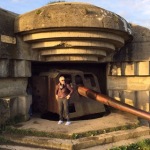
You are about to embark upon the Great Crusade, toward which we have striven these many months. The eyes of the world are upon you. The hopes and prayers of liberty-loving people everywhere march with you. In company with our brave Allies and brothers-in-arms on other Fronts, you will bring about the destruction of the German war machine, the elimination of Nazi tyranny over the oppressed peoples of Europe, and security for ourselves in a free world
~General Dwight David Eisenhower – Message to men on D-Day
- The most important sectors along the beaches were manned by German soldiers but many were staffed by Czechs or Polish speaking Ukrainians who were given the “choice” of enlisting in the German Army or “working” in armament factories.
- The first Ranger was at the top of Point du Hoc five minutes after landing. Twenty minutes later there were 150.
- Instead of big guns at the top they found telephone poles disguised as guns. The Germans had moved the real guns inland. The Rangers found them a few hours later in the hedgerows, probably by following the tracks.
- Only a few of the local French were allowed past the check points near the beaches, farmers mostly. Some locals were forced to work on the building of the gun emplacements, etc. They did what they could to slow things down by putting too much sand in the concrete, getting their guards drunk on the local calvados (apple brandy), etc.
- There was a professional bicyclist from Bayeux who had a pass to train on the roads around the beaches. He actually ran a spy network that collected information about the gun emplacements, state of readiness and so forth. He was smuggled out just before the invasion and served in British Intelligence for the remainder the war.
- The life expectancy of a radio operator in the French Underground was six months.
- The underground used carrier pigeons as one way to get messages across the channel. They flew from “neutral” Spain, too.
- A carrier pigeon can fly 600 miles in a day.
- Shortly before the landings Radio Londres broadcast the first stanza of Paul Verlaine’s poem “Chanson d’automne” to let the resistance know the liberation was imminent.
- When the Rangers’ ropes got too wet and heavy to fire to the top of the cliffs at Point du Hoc they used their daggers to cut hand holds in the sandstone.
- The landings at Juno and Sword Beaches occurred a hour later than the others. They needed higher water to clear the reefs there.
- In the months following D-Day, the British laid a pipeline under the channel to bring in petrol. It was called Project Pluto. The principal planner died two years ago at 100.
- The maneuver used by Captain Dick Winters of “Band of Brothers” fame to take out the gun emplacement behind Utah Beach is still taught at West Point.

- At the American Cemetery at Omaha Beach there are 10,615 dead or missing memorialized.
- The names of the 1500 or so missing are engraved on a wall. A bronze star beside some indicates those whose remains were subsequently found. The most recent were found during a basement renovation in Bayeux – in 2012.

- There are 149 Stars of David in the cemetery, far fewer than the actual number of Jewish boys buried there. They were discouraged from listing their religion on their dog tags in case they were captured.
- The graves of the Unknown are interspersed among the other graves.
- The families of the dead were given the choice of bringing the bodies home or burying them here. 40% are buried here but there are a disproportionate number of officers who remain here with their men.
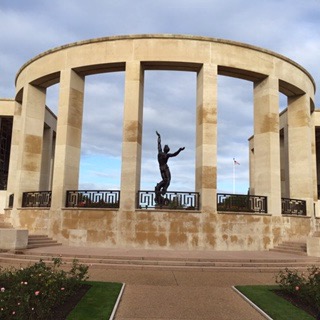
- The cemetery is American property, gifted to the US by France.
- The only general, and at 56 the oldest combatant, to land with the first wave on D-Day was Theodore Roosevelt Jr, the son of President Teddy Roosevelt. He was also the only one whose son also landed that day. He was loved by his men but at various times both Bradley and Patton wanted to fire him for “…loving his division too much…” However, both said he was among the bravest officers they had ever served with. He displayed great leadership and bravery at Utah Beach. 36 days after D-Day, Roosevelt died of a heart attack near Saint Mere Englise. Both Patton and Bradley served as his pall bearers. He was posthumously awarded the Medal of Honor.
- There is a small church inland from Utah Beach, near where the 82nd Air Born dropped, which became a make-shift infirmary. For three days two medics, Bob and Ken, treated 80 men, including a few Germans. An artillery shell came through the roof but didn’t explode. It cracked a marble tile in the center aisle. It’s still cracked. Blood still stains the wooden pews. Bob became a Baptist minister. He died in 2012. Half of his ashes lay under a plaque outside the church. The church is closed now – only used on Christmas, Easter and June 6.
October 8: Our trip back to Aix today was uneventful although for a while we thought were in trouble. There is a rail strike scheduled for today. Short strikes of various stripes are common in France. They are usually of short duration and intended to send a message rather than totally disrupt things. The impression is that strikers and the strikees kind of work together. For instance, the SNCF (National train network) website says that 6 out of 10 eastbound and 1 of 2 northbound TGV trains are scheduled to be effected. We are on a southbound train as I write this and there has been no problem. We did have a different problem, though. We are to leave Sunday for five nights in Barcelona so we corresponded with our apartment owner to coordinate a check out time for Sunday morning. She informed us that we are contracted to leave Saturday (She is right and the unit is booked for Saturday). Oops! I think the confusion arose from how we and the Europeans denote dates. Our departure date is 10/11 by our way of doing things but 11/10 the European way. Anyway, we scrambled and found a hotel nearby for Saturday night and all is well.
We both got haircuts today. There was a little translation trouble on my part. I’m trying to focus on all the money I will save before my next one in late 2017.
Our next post will be from Seville.

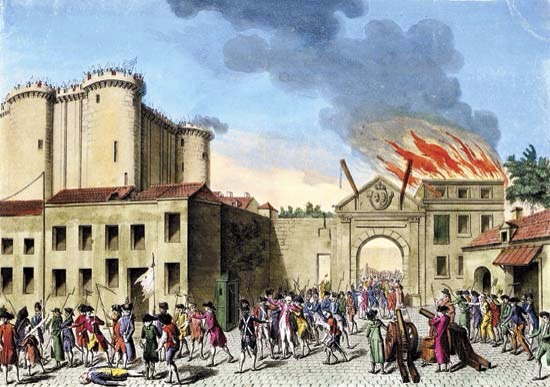





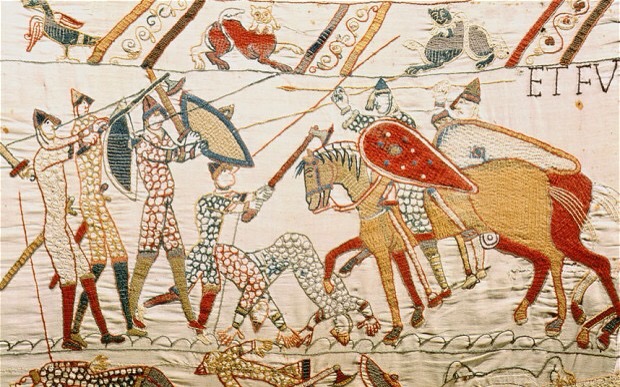


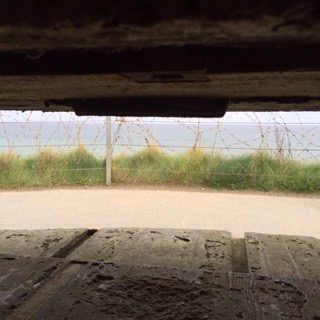

I like this new format….couldn’t figure out the other one. So will the new hat help with the new haircut?
LikeLike
Nothing could help.
LikeLike
Glad you found and enjoyed the restaurant in Bayeaux. Sounds as though you throughly enjoyed Normandy. We found it to be a bucket list kinda place. Can’t wait to hear about Seville next.
LikeLike
Although we were finally able to open your other messages and loved reading about your trip, we definitely prefer this format which is so much easier to open. Enjoy Spain – my grandmother’s country!
Cynthia & John
LikeLike
I am loving the history, Steve. The WWII information adds color to my reading of a new book, All The Light We Cannot See by Anthony Doerr. It sounds like you are having a ball. Love you both! Karen
LikeLike